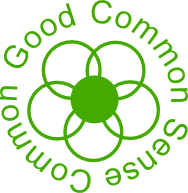Dec 2021 - Precious insects need our help
Published in Charlbury Chronicle December 2021
Insects are precious - they underpin the complex natural world surrounding us and yet their numbers are plummeting which has a knock-on effect on the more familiar wildlife that we love and cherish. The unusual weather patterns we’re all facing with climate change are very disruptive. This year we saw a cold spring with April being the 4th driest on record and May then being the 4th wettest – these are key months for our breeding birds when even seed eaters need to feed their fast growing young on high protein insects. This year many blue tit families didn’t make it as the parents struggled to find insects for their young. Also, you may have noticed it’s been a bad year for local apples – apples flower in May and the blossom is pollinated by insects – hence the scarcity of Bramleys and in some gardens all the trees failed to produce fruit.
Generally we take insects for granted and possibly only recognise the more charismatic butterflies and bees – we know even less about their life cycles – where for example do they spend the winter? Insects pass through many developmental stages that look very different from the adults which might live only a very short time. They might overwinter in crevices behind bark, within the dead stems of flowering plants, or in the soil. They might hibernate as adults or survive in earlier stages such as eggs, larvae, instars, caterpillars, or pupae. Some butterflies have two generations a year with one developing quickly over the summer and one taking the other nine months. Some lay their eggs on the stems of grasses or the leaves of specific plants to provide the right food supply for the next caterpillar stage. If we don’t appreciate the complexity of insect life cycles throughout the year then we can easily destroy them unintentionally when mowing grass and clearing vegetation.
This year, I have been impressed by the many places in Charlbury where people have been managing their green spaces more sensitively for wildlife. I enjoyed taking photos of the wild flowers and any insects I could find – and I learnt a lot. We have a wealth of opportunities for encouraging more wild flowers and more insects in Charlbury, many of our lawns and verges are remnants of old grasslands where the flowering plants survive as low-growing rosettes despite decades of being closely mown. Many green areas are a mixture of fine slow-growing grasses and well-established plants that would flower beautifully if given the chance. I found the best local limestone flora at Sandford Rise and Hanover Close which was an orchard before the houses and road were built in the 1960s. Another revelation was the Woodstock Road which was realigned as a turnpike to Woodstock around 1800, until then it was called Green Riding and was the way to Stonesfield – the verge today has the same flora as Wigwell Nature Reserve on the north side of town.
But how then to cut the grass without doing harm? Grass grows according to both rainfall and temperature, so each year is different – this August was unusually cool and the grass didn’t grow much but resumed again in the warm September and October. Areas with spring wild flowers such as cowslips and lady’s smock need to be left uncut until they have flowered and set seed. On the other hand, areas of strong-growing grass would benefit from being cut in March and April to remove the vigorous growth and allow the flowering plants to then bloom from May onwards without being swamped by the grass. Best advice is maybe to be observant about your own patch - what sort of grass sward you have, what’s flowering when, what insects are around and always to leave some areas uncut overwinter hoping that some insects are using it to complete their lifecycles. Mowing the edges around uncut areas or mowing paths through them also sets them off well and makes it clear that rather than being unkempt and neglected, the areas are being lovingly cared for and appreciated.
The Street Fair display of photos of wild flowers and insects in Charbury will be displayed again on our stall at the Farmers Market on 11 December (9-1pm), please come and see it.
CE
Charlbury Green Hub
